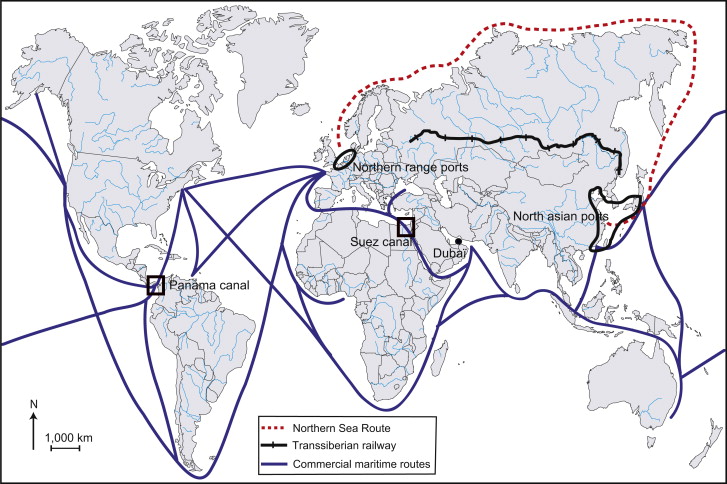Maersk’s first container vessel through the Northern Arctic Route
New route due to ice melting result of global warming
Maersk will send its first shipping vessel through the Arctic next week. The vessel will carry Korean Electronics and Russian fish. It will be the first container vessel to navigate in the Arctic sea route that Russia forecasts to become a new shipping lane.
Russia hopes that this route becomes a Mini Suez Canal, cutting transport time from Europe to Asia and back. The route will only be feasible for three months of the year around September. After these trial shipments, they will be able to prove if it is a commercially viable trade route.
International shipping firms had been put off from the Northern Sea route due to expensive Ice-class vessels, high transit fees as well as Russian Ice Breaker escorts, unpredictability in the ice coverage, the sky rocketing insurance rates and not enough search and rescue teams.
The route will start from Murmansk near the border between Russia and Norway to the Bering Strait near Alaska.

Russian officials have manifested that new icebrakers will allow for year-round navigation in the 2020’s which also is in line with the Russian efforts to build new roads, railways and overhaul its ports in an expansion of its freight capacity, preparing for the increase in shipping traffic along the Arctic Coast.
The ship to sail will be the Venta Maersk, with 3,600 TEU capacity on the Northern Sea Route, which became accessible to shipping due to climate change and the reduction of sea ice in the Arctic.
The Venta Maersk is one of the largest ice class vessel which will also collect data in its one-off trial for now, confirms Maersk.
Maersk’s rival, COSCO already used the rounte for another type of vessel, also, in July Novatek, the Russian LNG producer delivered its first cargo to China using the Northern Sea Route
China also revealed its intentions to create a Polar Silk Road developing new shipping lines as a result of global warming encouraging the construction also of maritime infrastructure along the Arctic.


